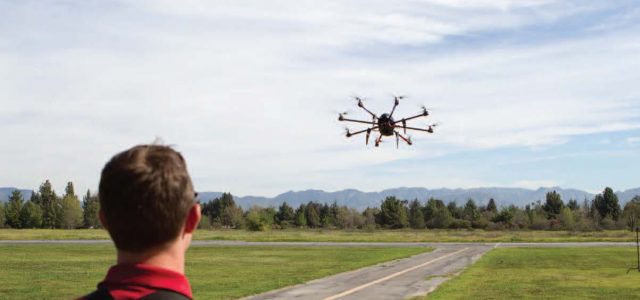Flying an aircraft is about maintaining control of its movement through the air. In aviation, pilots are taught to perform ground-reference maneuvers to sharpen their flying skills. When learning how to fly drones, there are similar maneuvers that you can do to improve your control of the aircraft. It’s important to know that having complete control of the aircraft is what separates the pro from an amateur. The benefit of having GPS and altitude hold is that it allows you as a novice pilot to maintain your position while making it easier for you to learn how to fly. Practice flying in a circle
while holding a constant airspeed and altitude. Once you’re comfortable with that, practice flying a rectangular pattern and then move to figure-8 patterns. Repeat flying each pattern until it’s easy and you are able to safely maneuver your multirotor.
You should also practice constant airspeed climbs and descents as well as spot landings. Once you’re comfortable in the GPS mode, try flying in attitude mode. Use all the other modes available in the flight controller, such as the “simple” or “free” mode. You want to be able to fly the multirotor manually in case you lose the GPS signal. It is important that you have the skills to fly without the use of GPS and altitude hold. You
should also practice the “return to home” feature by using the fail-safe switch. Practicing all these maneuvers and flying in all the different flight modes will make you not only a better pilot but also a safer pilot in case an unexpected situation or emergency occurs.
Air Age Media ©




















I practice several hours a week, weather permitting, developing my eye/hand memory by flying at a large open area. I fly in figure eights, circles, sideways, and backwards. I just watch the aircraft and use my sticks in all different directions. I have developed my muscle memory in this manner. I also like to view my instruments to orient my aircraft. This is great practice to keep you relaxed and not panic in a situation where you have lost sight and orientation.